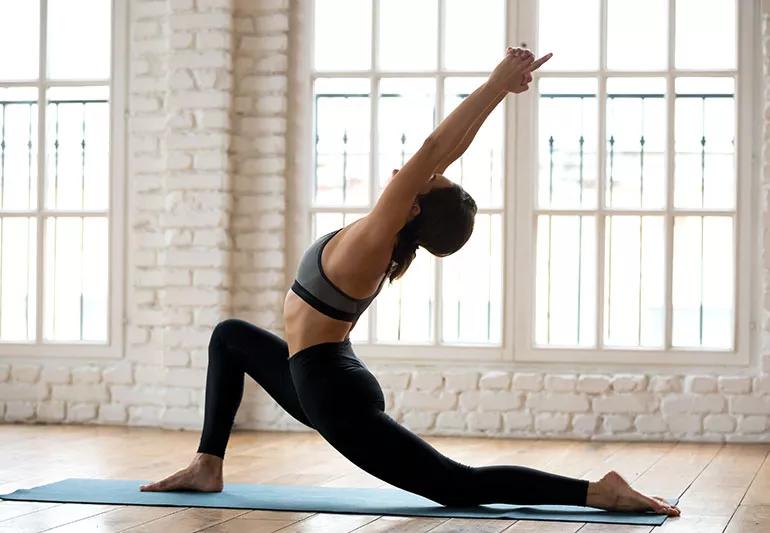Understanding the pros + cons

Most people understand the basic health benefits of yoga: flexibility, stress relief and muscle strength, just to name a few. But why is it different when you turn up the heat? Is the increase in degrees a gimmick or is it actually beneficial to your health?
Advertisement
Cleveland Clinic is a non-profit academic medical center. Advertising on our site helps support our mission. We do not endorse non-Cleveland Clinic products or services. Policy
Hot yoga is exactly what it sounds like — yoga practiced in a hot environment. Most hot yoga classes have an increased room temperature set anywhere between 90 and 105 degrees Fahrenheit. That’s quite a difference compared to normal room temperature (68 to 72 degrees Fahrenheit). Why so hot? The heat helps lubricate tendons and ligaments, making it easier to fold into certain stretches and poses. “The heat allows participants to get a deeper stretch because their body is warmer and they can move into the poses a little deeper,” says yoga instructor Jennifer Sauer.
The potential pros of hot yoga are:
On the flip side, it can also be easy to overdo it in a hot yoga class. Because of the high temperature in the room, you might not realize how hard you’re working and you could end up taking stretches too far before your body is ready.
The potential cons of hot yoga are:
Hot yoga should be something that you ease into. So taking some regular yoga classes first and getting an idea of your current flexibility level is recommended. Beginner yoga classes also help build on your knowledge of the poses and sequences.
“While people have reported pain relief, detoxification and weight loss from hot yoga, scientific research is limited,” Sauer says. “It’s safe to say that hot yoga is more vigorous than traditional practices,” she notes, “but the jury is still out on overall calorie burn and weight loss.”
Advertisement
When you combine hotter temperatures with extra exertion, your body is working harder and therefore increasing your heart rate. So, ultimately, you are burning a good amount of calories during your hot yoga session — the data just doesn’t exist yet for hot yoga specifically.
Like other types of exercise, hot yoga isn’t for everyone. Hot yoga is not suggested for those who are pregnant or have a heart condition. The heat can also aggravate asthma.
Sauer recommends looking out for side effects such as dizziness, lightheadedness and not being able to take a deep breath in. “If that happens, return to a stable position or leave the studio until you feel better,” she says. “It’s important to stay hydrated and listen to your body.”
When it comes to hot yoga — try attending a few basic or beginner yoga classes first. Then when you feel comfortable, try incorporating a heated class.
Here’s how to find the best yoga class for you.
“There are different styles of yoga, so if you try a class that doesn’t appeal to you, try another type of yoga or a different instructor,” Sauer says. “The heat isn’t for everyone — and that’s perfectly OK!”
Advertisement
Learn more about our editorial process.
Advertisement

The order of your workout matters when it comes to reaching fitness goals

A consistent exercise routine can bring you positive results from head to toe

Somatic yoga focuses on the sensation and experience of movement — not striking perfect poses

Being truly present in your body while you work out may reduce stress, heal trauma and more

Somatic Pilates is less form-focused and more experience-focused

Exercising and stretching your lower back, hamstrings, hips and quads can greatly improve your physical well-being

Perfecting the squat before trying a lunge can start you off on the right foot

Good form is essential for dumbbell rows, which work out your mid- and upper back

If you’re feeling short of breath, sleep can be tough — propping yourself up or sleeping on your side may help

If you fear the unknown or find yourself needing reassurance often, you may identify with this attachment style

If you’re looking to boost your gut health, it’s better to get fiber from whole foods